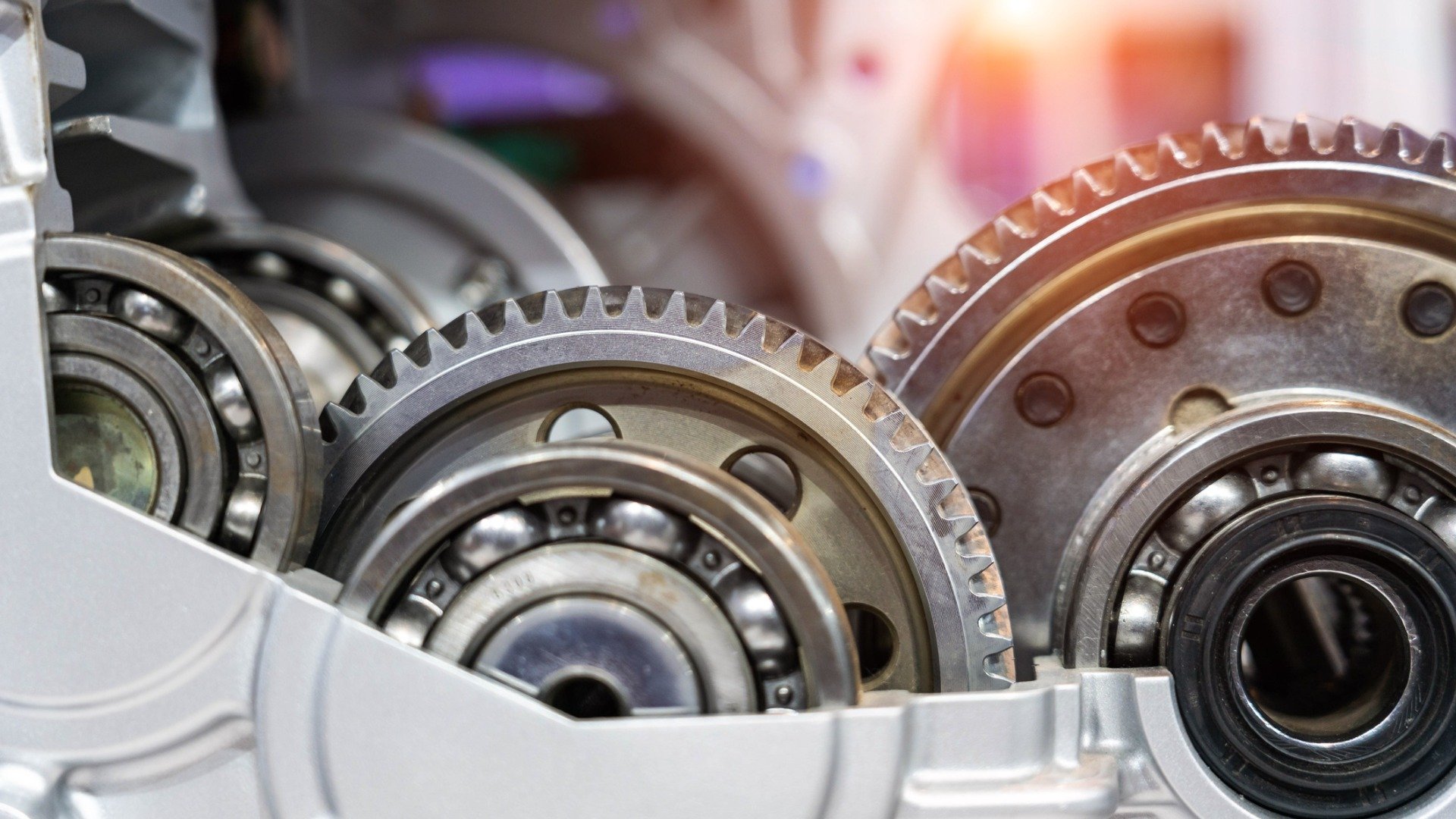Additive Manufacturing: Game Changer or Roadblock?
Apr 20, 2020 • Features • 3D printing • copperberg • manufacturing • Additive Manufacturing
Additive Manufacturing (AM) is on the front line of the unfolding industrial revolution. This string of rapid prototyping technologies is replacing conventional production, and consequently, it is poised to generate substantial economic revenue by 2035—$196.8 billion. Adrian Cirlig and Teodora Gaici explain more...
The future is certainly bright, but so is the present. On any given day, manufacturers can turn to AM technology to facilitate the production of individually customized products at relatively low costs, reshape the design process, and consolidate their supply chains.
AM will remain a particularly active architect of customer-driven design, virtual inventory, and rapid iterationsfor new product development. Yet it’s not all roses; the lack of quality consistency may slow production runs to a trickle.
In consequence, is AM both the cure and the culprit of innovation volatility? Industry experts seem undecided in the matter as this paper from the Rand Corporation outlines.
Additive Manufacturing: A Magic Bullet for Field Service Logistics?
AM is, after all, a disruptive technology—one that comes with a learning curve. Many top-tier leaders have justifiably gauged the trajectory of additive technology, and when they sensed it had promise, they gingerly lunged for it.
Through the use of AM technologies,anyone can manufacture products without any required tooling for production. That’s right—traditional molding techniques or large machines that have yet to be deftly transported will no longer impede manufacturing performance. Simply put, this set of powerful AM machines has the ability to fabricate a product from a digital geometry representation. Once they accurately replicate computer-aided design drawings, AM tools directly transform three-dimensional structures into functional physical prototypes and, more recently, ready-for-use products—all that in just a matter of minutes. The physical parts are built out of plastics, polymers, metals, ceramics, stainless steel, or other types of material by using a layer-by-layer printing process. A vast majority of modern AM machines print with multiple materials simultaneously and allow the development of mixed-material products.
"Manufacturers must have a plan for everything—how, when, and where they design and manufacture products rank top of the list..."
Organisations with a strong innovative culture recognize the need to facilitate on-demand production, and as it turns out, they’re growing faster and increasingly outpace their competitors.
Innovation, however, is rarely linear. In most cases, it’s a progressive affair that disrupts practically every aspect of the business
Manufacturers must have a plan for everything—how, when, and where they design and manufacture products rank top of the list. AM is already distorting modern-day manufacturers’ long-planned reality by encouraging them to rethink every design-to-fabrication procedure and go well beyond traditional manufacturing methods. Those who are up to the challenge will become the leading innovators in their market.
Additive Opportunities for the Taking
The revolutionary AM technology is becoming commonplace one layer at a time.
This significant surge in popularity may be due to the proposed benefits that are in visible contrast with those provided by conventional manufacturing operations.
Milling, for example, can produce a large amount of unnecessary material waste. Distinct in nature, additive processes have become a statement of sustainability—both economically and environmentally. It is touted that AM technology reduces energy consumption, facilitates dematerialisation, and improves resource efficiency by using waste as an input to construct equitably personalised products in a cost-effective manner.
This type of manufacturing process also attempts to minimise the need for packaging, transportation, and storage. More than that, prototyping and building a high-value product from geometrically complex data in-house can also significantly reduce shipping costs and shorten supply chains.
Since AM machines offer complete (and highly flexible) design freedom, they allow early customer involvement in the product development process. This customer-driven design procedure helps manufacturers respond to individually customised demand wherever needed, revise and conduct timely design changes, and reduce time-to-market. Above all, manufacturers are empowered to forge direct-to-consumer relationships and prolong the lifetime value of a specific object.
"With large-scale printers being well underway, Additive Manufacturing technology will steadily extend its capabilities..."
It’s impressive, but that’s just barely scratching the surface. AM is an advocate of product differentiation—at scale!—and industry experts can take full advantage of this technology to mass-produce custom-fit objects without paying a steep price for additional workers or tooling. Manufacturing in large volumes will, in fact, reduce the cost per unit, minimise the total cost of ownership, and drive greater growth.
At the moment, AM machines can mainly print tiny (yet rather complex) items; they can briskly produce fully-functional parts in just a single production step and without the need for assembly lines. With large-scale printers being well underway, AM technology will steadily extend its capabilities to open up innovative business models across the industry.
Additive Manufacturing Technology Is Ripe for Investment, But the Caveats Remain
It’s in the cards: AM tools will offer unlimited design-to-fabrication opportunities for modern-day manufacturers. The vast majority of these professionals may inevitably face certain drawbacks that can’t (and most probably won’t!) go unnoticed.
Quality consistency is one of the main stumbling blocks.
Every manufacturer aims to develop consistent parts and ensure repeatable quality levels throughout their production lines. Yet no two items are exactly the same. Given that AM machines can produce parts as small as 500 nanometers, the differences may be slim or less obvious; but they exist, and a single inconsistent subset that is left unaddressed could put the brakes on the production line.
All the materials used for crafting AM-produced components should also be processed within the required quality standards and specifications, or else they might prevent objects from being recycled
"Many manufacturing and field service professionals haven’t gained an in-depth understanding of Additive Manufacturing techniques yet, let alone hands-on experience.."
The knowledge gap is another considerable barrier to the adoption of AM technology. As this study warns “[the] knowledge of AM in the industry exists in pockets.” Many manufacturing and field service professionals haven’t gained an in-depth understanding of AM techniques yet, let alone hands-on experience.
Amid global economic unrest, the lack of know-how may drive economic insecurity and hamper technology adoption.
Route Around the Gaps and Fortify Additive Manufacturing Innovation
An AM-produced component may be a sure bet for unprecedented manufacturing gains. That is, of course, if manufacturers do not band-aid the inevitable caveats that eagerly come with every disruptive technology. /p>
As AM technology advances, the trick is to promptly address each limitation or potential risk and transform every temporary hiccup into an opportunity for modernisng manufacturing lines.
Capturing AM’s transformative potential is crucial for manufacturers who want to advance customer-led product development and freely reach all their revenue growth targets.
Further Reading:
Adrian is the Editor for a series of key industry events with Swedish Conference Producer, Copperberg.
- Find out more about his forthcoming event the Field Service Forum @ https://www.copperberg.com/fieldserviceforum/





















 Field Service News is published by 1927 Media Ltd, an independent publisher whose sole focus is on the field service sector. As such our entire resources are focused on helping drive the field service sector forwards and aiming to best serve our industry through honest, incisive and innovative media coverage of the global field service sector.
Field Service News is published by 1927 Media Ltd, an independent publisher whose sole focus is on the field service sector. As such our entire resources are focused on helping drive the field service sector forwards and aiming to best serve our industry through honest, incisive and innovative media coverage of the global field service sector.
Leave a Reply